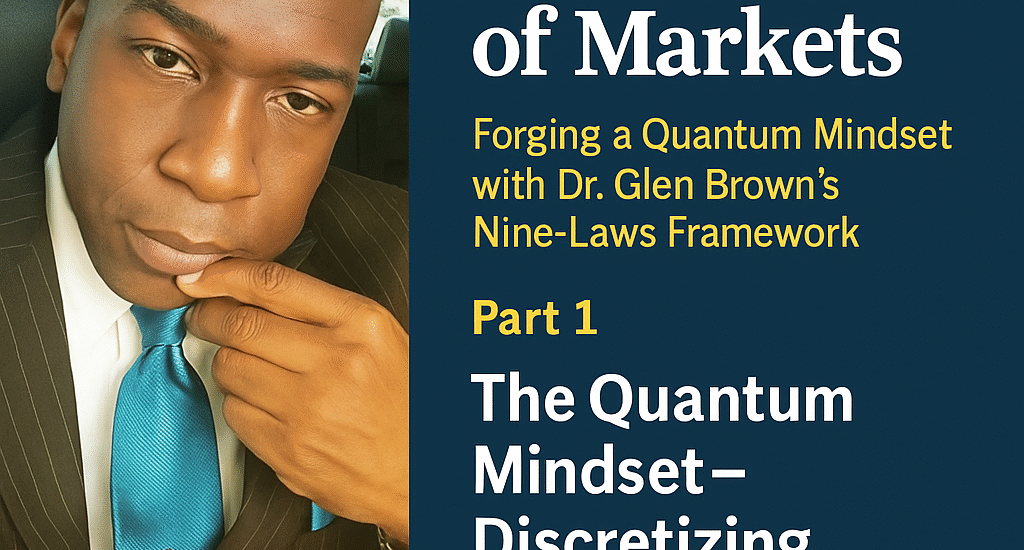Quantum Intricacies of Markets: Forging a Quantum Mindset with Dr. Glen Brown’s Nine-Laws Framework
- July 18, 2025
- Posted by: Drglenbrown1
- Category: Quantum Finance, Thought Leadership, GATS Series

Part 1: The Quantum Mindset – Discretizing Market Chaos
At the dawn of the 20th century, Max Planck introduced a radical idea: energy, once thought continuous, is actually emitted in discrete quanta. This discovery shattered classical mechanics and ushered in the quantum revolution—a world defined by probability, uncertainty, and interconnectedness. It is within this paradoxical space that modern finance finds its true reflection.
Markets, like quantum fields, are not smooth nor linear. Prices jump in ticks. Volatility bursts in shocks. Correlations entangle seemingly unrelated assets across space and time. Yet many traders persist with deterministic charts and Newtonian logic—searching for linear causality in a nonlinear world.
To operate at the frontier of finance, one must undergo an internal rebirth—a restructuring of perception, behavior, and intention. This is the Quantum Mindset. As Dr. Glen Brown states:
“We must consume ourselves to transform for our rebirth.”
The quantum mindset does not emerge from seminars or textbooks. It arises through disciplined observation of one’s own reactions, alignment of internal intention with external signals, and the forging of law-based models within closed proprietary ecosystems where markets, not clients, are the only counterparties.
Law 1: Correlation Regime Transition (CRTL) – Detecting Entanglement in Motion
Markets entangle like quantum pairs. CRTL identifies these correlation shifts using:
- Volatility vector norms ‖V(t)‖
- Eigenvalue spreads in rolling correlation matrices
- Principal component rotation
Actions:
- Pause trade execution
- Downweight high-loading assets
- Apply regime-aware stop-widening
Law 2: Weighted Decay of Historical DAATS (WDHDI) – Smoothing Market Decoherence
WDHDI applies weighted decay to the Dynamic Adaptive ATR Stop (DAATS), prioritizing recent volatility while preserving long-term structure. Techniques include:
- Lindblad-inspired decay functions
- Exponential half-life calibration
- Sentiment smoothing via adaptive kernels
Law 3: Macro Shock Propagation (MSPL) – Ratcheting Quantum Phase Transitions
Markets undergo phase transitions. MSPL captures these shocks using:
- Shock-reactive multipliers (γᵢ > 1)
- Nonlinear DAATS ratcheting
- Time-decaying propagation buffers
Forging a Quantum Foundation
Laws 1–3 serve as the initial harmonics of Dr. Glen Brown’s Nine-Laws Framework. They discretize chaos into structured opportunity. This mindset isn’t about feeling the market—it’s about engineering adaptive resilience.
Coming Next: Part 2 – Quantum Flow: Rewriting Market Time with Internal Entanglement
About the Author
Dr. Glen Brown is President & CEO of Global Accountancy Institute, Inc. and Global Financial Engineering, Inc. A renowned financial engineer and proprietary trading strategist, he leads the innovation behind GATS and the Nine-Laws Framework. His work bridges quantum theory, algorithmic trading, and mindset mastery.
Risk Disclaimer
Trading financial markets involves significant risk and is not suitable for all investors. This content is for educational purposes only and does not constitute financial advice. Past performance is not indicative of future results.
